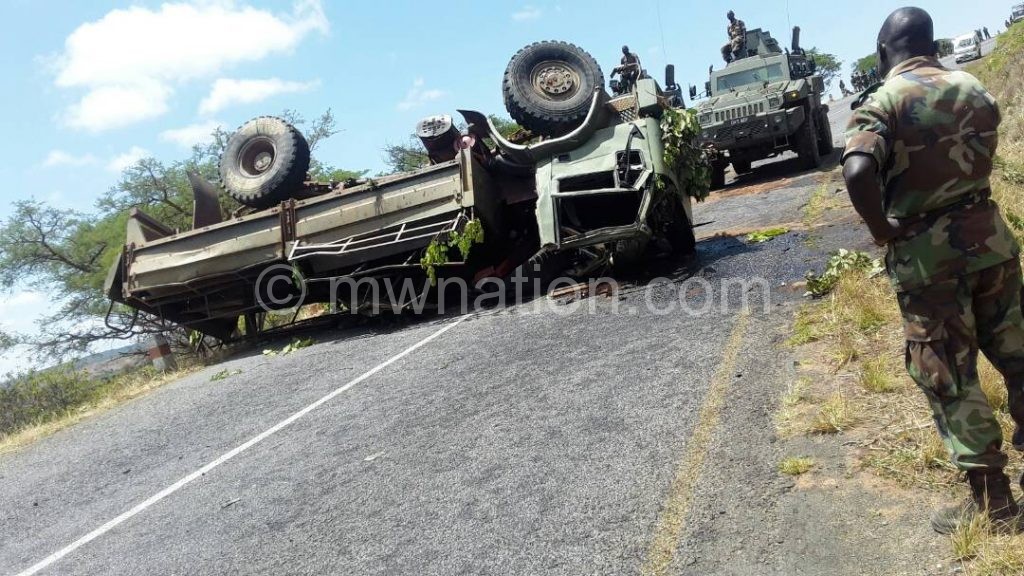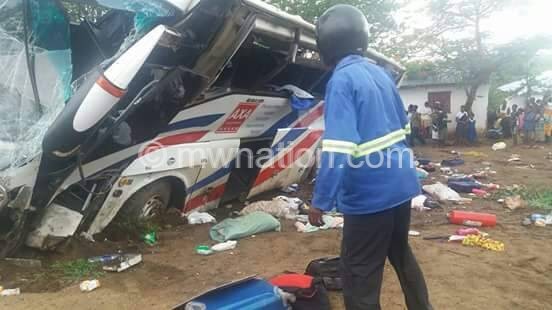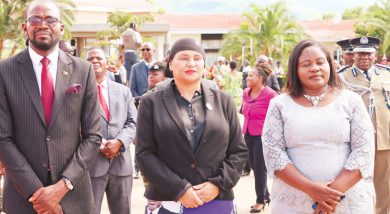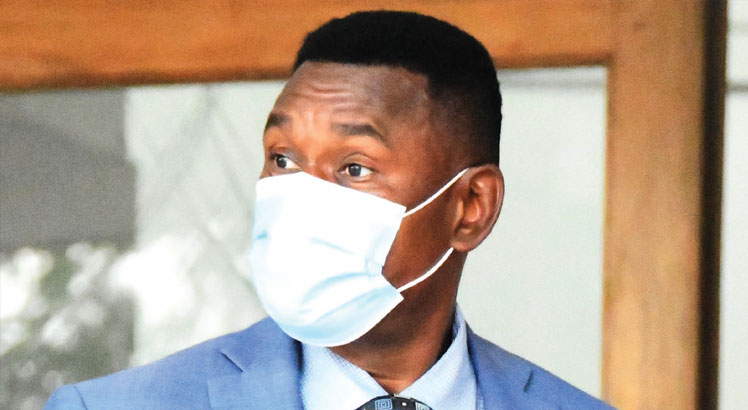road accidents: the kiss of death
In four years, road accidents have claimed 4 000 lives in the country with their occurrence on the increase every year since 2013. Weekend Nation Investigates will carry out four series on the gravity, causes, cost and solutions to road accidents. In this first part, our reporter AYAMI MKWANDA is focusing on the trend of road accidents for the past five years.
On October 16 this year, tragedy struck when 13 people perished instantly on the Mchinji-Lilongwe Road following a head-on collision between a two-tonne lorry and a freightliner truck.

Government called it a national disaster with the then Minister of Information Nicholas Dausi reacted with disbelief: “This is a tragedy. Imagine, 13 members of a family dying at once!”
And, when October elapsed, about 30 lives had been lost to the carnage on the road as reported by The Nation. This number surpasses that of three months of July, August and September that recorded about 27. In magnitude, the Mchinji road accident almost resembles that in Mzimba on November 2 2017 that saw 22 Malawi Defence Force (MDF) recruits dead.
The frequency of accidents resulting in
Unfortunately, road accidents are escalating. Currently, there are over 300 000 registered cars in the country according to the Directorate of Road Traffic and Safety Services (DRTSS).
However, almost every day more cars are pouring into the country.
Reports from national police headquarters indicate that from January to June this year road accidents increased by 22 percent. The increase is from 1 791 cases last year to around 2 000 this year over the same period of six months.

“But the number of accidents for the third quarter from July to September is 1 100. This is an increase of 28 percent from the same period last year which recorded 861,” says national police spokesperson James Kadadzera.
This brings the figure from January to September this year to 3 100, a number that almost equals that of last year which was 4 609.
Such has been the trend for the past five years as almost 8 000 people have died on the road between 2013 and 2017.
From 2013, the number of people killed in road accidents has been increasing. In 2013, 977 people died. The following year, 1 060 lost their lives while 1 068 died in 2015. However, the number of deaths doubled in 2016 and 2017 with 2 372 and 2 472, respectively. These are statistics that worry travellers, law enforcers and engineers.
Traffic police department head Mcferson Matowe says the problem of road accidents is big.
“Despite that controlling measures are in place, the trend of road accidents is worrisome. For example in 2016, 961 fatal road accidents were reported in which 2 372 people lost their lives while in 2017, 940 fatal road accidents were reported in which 2 472 people lost their lives. So it can be seen that despite that the number of accidents decreased in 2017, the number of people killed was on the rise compared to 2016,” explains Matowe.
According to the World Health Organisation (WHO) nearly 1.3 million people die in road accidents each year while 20 to 50 million others are injured globally and are reported as the leading causes of death among young people aged between 15 and 29 and are among the top three causes of death among people aged 15 to 44.
Further, WHO reports that Malawi is on position three among Southern African counties with the highest number of accidents after Namibia and Swaziland (now eSwathini) and on position eight among the world’s top 10 countries with the highest number of road accidents.
An automobile engineer Henry Masoka who has been following events of accidents on the roads for many years, regards them as more dangerous than diseases.
“In fact, travelling on the road has become a risky adventure. One can only thank God for his travelling mercies upon reaching one’s destination,” laments Masoka.
The engineer observes that the danger of road accidents is that death is instant, unlike diseases where there is remedy with chances of recovery.
“And this is exacerbated by the fact that our emergency response in hospitals is very poor. And with the shortage of health personnel and ambulances in hospitals, people seriously injured are at risk of dying even in a situation that they would have been saved,” he contends.
But hospitals say their duty is not to send ambulances to the accident scene to collect victims, says Queen Elizabeth Central Hospital (Qech) spokesperson Themba Mhango.
“Local councils and the police should have special ambulances that rush to the accident scene to take victims and offer first aid. At the hospital, we just receive the casualties for treatment,” says Mhango.
Although the councils have trained personnel in their fire departments who can offer first aid treatment to those injured, Masoka has faulted their response as slow and in some instances, non-existent.
A resident of Lunzu Township in Blantyre, George Welemu, who has witnessed road accidents on the M1 says during accidents it is just other well-wishers such as motorists who rescue victims to hospitals.
“There was a situation last year in which an accident occurred near Lunzu trading centre involving a car driving from Blantyre and a lorry from the opposite direction. As one of the witnesses, I arranged for transport from other people to take the injured to Mlambe hospital where they were treated.
“But imagine a situation where there is no car nearby, it means the victims can die before an ambulance comes to pick them up,” says Welemu.
Yet, Blantyre City Council (BCC) spokesperson Anthony Kasunda insists the emergency response is effective. “The council made a commitment in its Service Charter to respond to emergencies within the shortest period of time once it gets report,” he says.
While BCC have emergency response system, their counterparts, Lilongwe City Council (LCC) do not have such facilities.
However, it is not only the delay of responses from city and district councils that result in deaths of seriously injured road accident victims but also long distances from the accident spot to the nearest hospital, claim some drivers.
“For example, if an accident happens at Manjawira on the M1 road, your nearest hospitals are Ntcheu District Hospital, Qech or Balaka District Hospital. But by the time the victim is rushed to one of these hospitals, they may have died due to loss of blood,” says Gabriel Tsikulamowa, a minibus driver who plies his trade between Chiingeni and Zalewa.
His observations are shared by a commuter, Jafalie Linje, who works in Zomba from Blantyre that many roads in Malawi have passed through areas where health facilities are very far away from one another.
“So in the absence of a vibrant emergency response, by the time a victim reaches the hospital, it may be too late,” Linje explains.
Overwhelmed by the escalating spates of accidents, the Police are pleading with Malawians to always be mindful when using roads as the death toll keeps on rising.
“People should know it’s not possible to place officers every 100 metres to monitor traffic movement. As such, we also expect road users to be responsible. Otherwise, the situation will be graver with every passing day,” he says.
With a heavy heart, Matowe laments the loss of people who would have contributed positively to the development of the country. “Some of them are parents who leave orphans behind. This creates poverty in the families,” he quips.
His concerns were echoed by President Peter Mutharika when he attended a memorial ceremony for the 22 soldiers held at Kamuzu Barracks last month where he described the death of the recruits as unforgettable.
“The death of the 22 soldiers is a big blow not only to the country but their families as well who were looking up to them for support. They were young people full of hopes and dreams.”
And speaking during the Africa Road Safety Day commemorations in Karonga last Saturday, DRTSS head Francia Fergus Gondwe also lamented that most people killed in road accidents are those in their prime ages.
“It is also worrisome to note that the people aged between 24 and 44 are being killed most and this is the economic active group,” says Gondwe.
This year’s commemorations are themed: “Promoting Road Safety through Behavioural Change” to change people’s behaviour in line with Pillar number four of the Global Decade of Action on Road Safety (2011—2020), which emphasises “safer road users.”
That is why to avoid more deaths, the Ministry of Health (MoH) with Trek Medics International will this month roll out an Emergency Medical Services (EMS) project on the Blantyre-Lilongwe M1 Road to provide emergency services to accident victims.
The ministry’s spokesperson Joshua Malango explains that there are 23 ambulances to take victims to the nearest hospitals.
“The ambulances will be strategically placed along the roads. Trained health personnel on board will be offering first aid. This will minimise deaths of victims due to lack of first aid and travelling long distances to hospitals,” he says.
Meanwhile, road accidents continue to snatch the lives of people more often in the country.n





